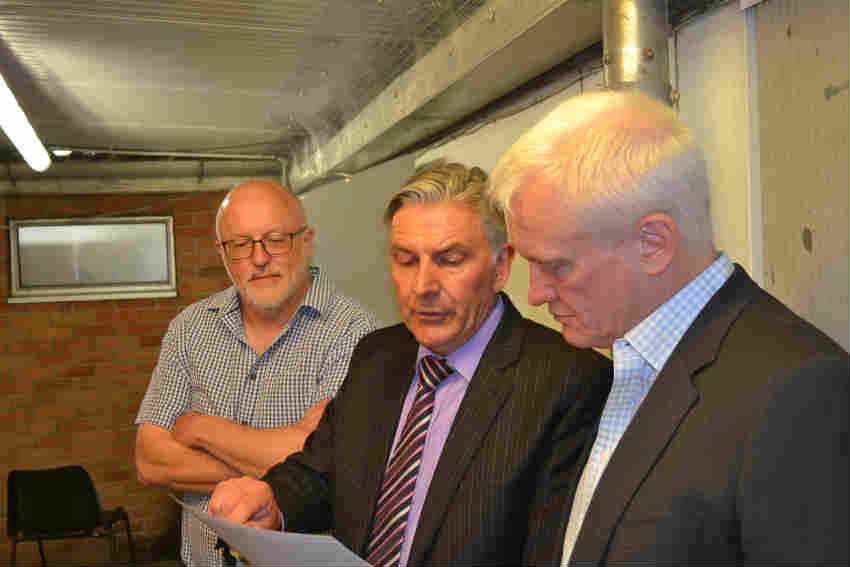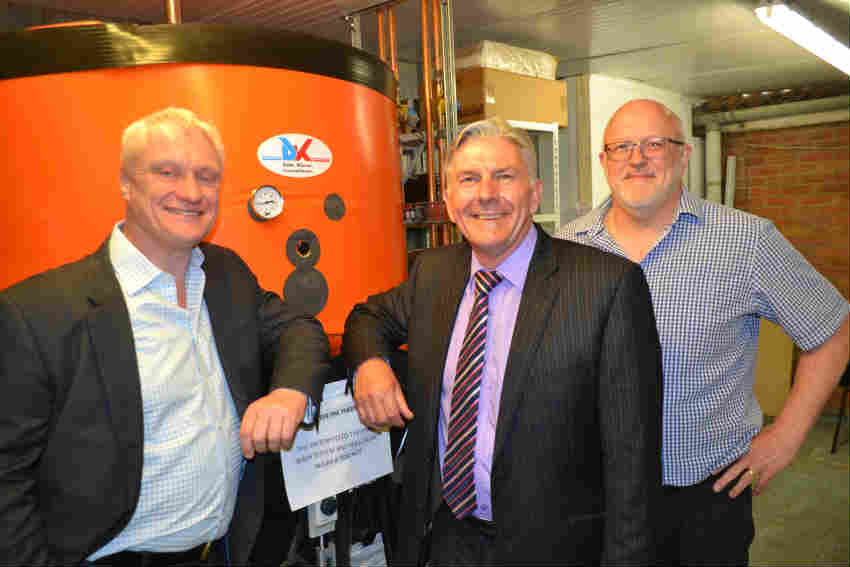20 October 2016
|
| Soanes Poultry has reared poultry in Yorkshire for over 65 years. But, the ageing air cooled condensers in its refrigeration plant were struggling to keep up with demand from their production line. The existing air cooled condensers use cold bore water spray jets in the warm summer months to help them cope with cooling needs. However, the system was barely able to keep up with the cooling demands needed by Soanes to get enough poultry products through the line. |
The company needed a solution to help deliver enough cooling capacity which would pay for itself quickly. In addition, Nigel Upson, general manager at the poultry firm, needed a solution which would enhance their production output and save them energy.
Suggested and Actual Solutions
The first suggestion was to install additional systems and to replace the existing air cooled condensers with new units. That was going to costs Soanes around £40,000.
DK Heat Recovery had another suggestion to solve the problem. Their solution would not only solved the problem; it would reduce their energy consumption and cost less than the first suggestion. DK's engineers proposed a suction gas heat exchanger solution which would improve the refrigeration efficiency by 8%. The solution would also provide the company with 2,880 litres of hot water an hour, which Soanes could uses during its production process. Soanes uses 45,000 litres of water a day in production.
DK Heat Recovery had another suggestion to solve the problem. Their solution would not only solved the problem; it would reduce their energy consumption and cost less than the first suggestion. DK's engineers proposed a suction gas heat exchanger solution which would improve the refrigeration efficiency by 8%. The solution would also provide the company with 2,880 litres of hot water an hour, which Soanes could uses during its production process. Soanes uses 45,000 litres of water a day in production.
Content continues after advertisements
Impressive Results
|
Using the heat recovery solution, DK helped Soanes get the room temperature they needed on time. And, it reduced the compressor run-time, which cut out more energy costs. Half of the condenser fans worked in 'idle mode' through the hot 2016 summer thereby using less energy too. The heat recovery system diverts 144kW per hour from the air cooled condensers.
With less energy use, Soanes managed to reduce its hot water boiler costs by 90% too. The business relies on LPG because of its rural location it is off the mains grid. And, the firm did not need to use any of its valuable bore-hole water through the summer either to spray onto the condensers. |
KIT LIST
|
Soanes is set to save enough money on the heat recovery solution to make it pay for itself within two years on the hot water savings alone.
And, what about production capacity?
The heat recovery system has been successful in boosting production capacity too. In fact, Soanes' has increased it production by 12% because of the DK Heat Recovery solution.
What about installation?
DK Heat Recovery's team is clear that its systems are 'straightforward' to install. In this case, there was no extra disruption because of the installation. DK did the work at the same time as the work to changeover the refrigerant done over four Fridays when the company stops production anyway.
What's the future for heat recovery in the UK?
| The heat recovery industry has progressed recently in the UK and it has a big place in a world which demands more from less from all aspects of business. But, there are no government incentives for heat recovery. There is no energy input. Government support overlooks this important industry. It focuses on renewable energy in the main and not on recycling energy. During the visit to the Soanes Poultry site, local MP Graham Stuart, arrived to look at what the Yorkshire firm is doing with the heat recovery solution. He is interested in raising the profile of heat recovery or heat recycling at Westminster to incorporate it as policy in the long term. |
However, to achieve that the heat recovery industry needs to organise itself with a trade body. That will make it easier for Government to liaise with a neutral body rather than single companies with vested interests.
Given the results that DK Heat Recovery is getting at the Soanes Poultry site, and the straightforwardness of the installation, it is difficult to see why systems which recycle heat are not more popular in industry, where applicable. It's common sense.
Given the results that DK Heat Recovery is getting at the Soanes Poultry site, and the straightforwardness of the installation, it is difficult to see why systems which recycle heat are not more popular in industry, where applicable. It's common sense.










